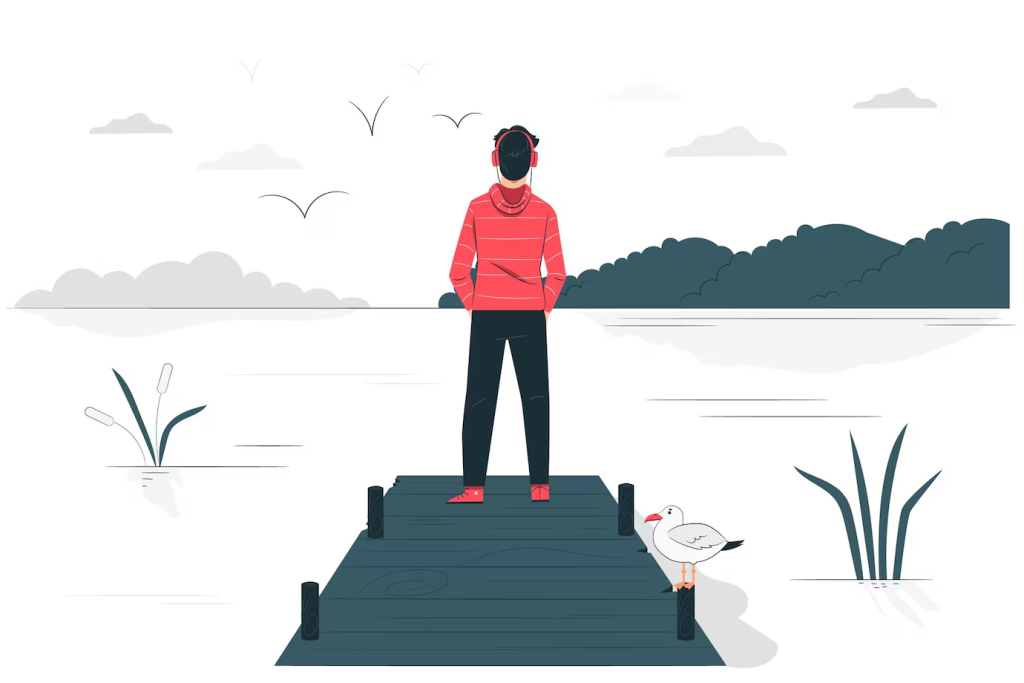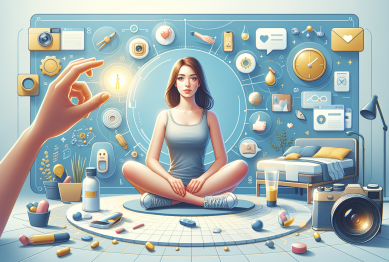Sometimes, the Best Company Is Yourself
In a world dominated by notifications, group chats, and endless scrolling, the idea of intentionally unplugging for a Solo Walk might sound old-fashioned — even lonely. But more and more people are turning to this simple act not just for exercise, but for clarity, creativity, and mental peace.
From tech executives to mindfulness coaches, solo walking is being redefined as one of the most effective tools for recharging in an overstimulated world. And unlike meditation or fitness routines, it’s free, flexible, and requires zero equipment.
Ready to experience it for yourself? Here’s what makes walking alone such a game-changer — and how to make it a daily ritual.

Why You Should Take Yourself for a Walk
1. It Boosts Your Mood and Reduces Stress
Multiple studies show that walking, especially in nature, reduces cortisol levels (the stress hormone) and improves mood almost instantly. But when you do it solo, the benefits multiply.
According to a 2022 study in Frontiers in Psychology, solo walks promote emotional regulation, allowing your brain space to process thoughts without social or digital interruptions (Berman et al., 2022).
And there’s science behind the calm. Walking activates the parasympathetic nervous system — your body’s “rest and digest” mode — helping you relax without even realizing it (Harvard Health Publishing, 2023).
2. It Enhances Creativity
Ever had a great idea hit you while pacing the room or walking around the block? That’s no accident.
Stanford researchers found that walking can increase creative output by up to 60%, especially when done without distractions (Oppezzo & Schwartz, 2014). Being alone enhances this effect by minimizing conversation and mental clutter, allowing thoughts to connect more freely.
Try it: Before your next brainstorming session, take a 20-minute solo stroll — no phone, no podcast. Just let your mind wander.
3. Walk It Reconnects You With the Present
In our hyper-connected lives, solo walking offers something rare: unfiltered presence. You start noticing the cracks in the sidewalk, the rhythm of your breath, the way the light hits a tree at just the right angle.
This sensory immersion is similar to mindfulness meditation. And with consistent practice, it can improve focus, reduce anxiety, and boost long-term wellbeing (American Psychological Association, 2023).
How to Start a Solo Walk Habit
If the idea of walking alone feels a little foreign (or boring), don’t worry — the key is to ease in and stay curious. Here’s how to make it a habit you’ll actually enjoy:
1. Choose the Right Environment for walks
Not every solo walk has to happen in a forest. You can walk:
- In your neighborhood before breakfast
- Around a park during your lunch break
- Through a quiet part of your city after work
💡 Pro tip: Try walking somewhere new once a week to keep things fresh.
2. Go Phone-Free
Digital detox doesn’t mean complete disconnection. But for your walk, consider:
- Switching your phone to airplane mode
- Using “Do Not Disturb”
- Or better yet, leaving it behind entirely
If you need it for safety or navigation, at least resist checking notifications until after your walk.
3. Set a Time — But Keep It Flexible for Solo Walk
Start small:
- 10 minutes around the block
- 20 minutes through your local park
- 30 minutes to unwind after work
The key is consistency. Build it into your calendar the way you would a meeting or workout.
4. Let Go of Productivity Pressure
You’re not walking to hit a step goal or brainstorm your next pitch deck (although that may happen).
Unexpected Benefits of Solo Walk
Aside from mental clarity and stress relief, solo walks bring:
- Better problem-solving: Walking gives your brain space to process and resolve dilemmas.
- Improved posture and breathing: You naturally correct yourself when walking with awareness.
- A deeper connection to your surroundings: You start to notice details and rhythms you usually miss.
Common Challenges for Solo Walk (And How to Handle Them)
Q: “I get bored walking alone.”
Try focusing on your senses. What do you hear, see, smell, feel? Bring a journal and jot down one thing that stood out post-walk.
Q: “I feel unsafe walking alone.”
Pick safe, well-lit routes during the day. Let someone know your route. Walk with confidence. Consider solo walking apps with live tracking like bSafe or Strava Beacon.
Q: “I don’t have time.”
Start with 5 minutes. Solo walks are less about distance and more about the pause.
Real Stories From Solo Walkers
- “I started walking alone after lunch every day during the pandemic. Now, it’s my reset button. I process work stress before it follows me home.” — Jared, tech consultant
- “At first, it felt weird. But within a week, I was sleeping better and had fewer headaches.” — Priya, full-time mom and writer
- “My best ideas come when I’m walking. I’ve solved more design problems on foot than at my desk.” — Lena, product designer
Final Thought: Take the Step Yourself
Solo walking isn’t just about movement. It’s about making space — in your mind, in your day, and in your life. Whether you’re burned out, blocked creatively, or just looking for something gentle to anchor your routine, this simple act can offer exactly what you didn’t know you needed.
The next time you feel stuck, overwhelmed, or even just a little off — try walking it out, solo.
References
- Berman, M. G., Jonides, J., & Kaplan, S. (2022). The cognitive benefits of interacting with nature. Frontiers in Psychology. Available at: https://www.frontiersin.org/articles/10.3389/fpsyg.2022.121351
- Harvard Health Publishing (2023). Walking for health: It’s all about the steps. Available at: https://www.health.harvard.edu/newsletter_article/walking-for-health
- Oppezzo, M., & Schwartz, D. L. (2014). Give Your Ideas Some Legs: The Positive Effect of Walking on Creative Thinking. Journal of Experimental Psychology. Available at: https://pubmed.ncbi.nlm.nih.gov/24749966
- American Psychological Association (2023). Mindfulness and mental health. Available at: https://www.apa.org/topics/mindfulness/mental-health









